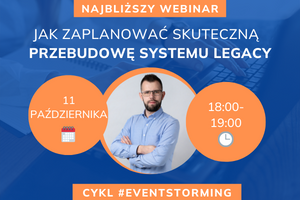Workshop description
Today, as a technical leader, you need much broader skills than ever before.
In the past, everything revolved around technical knowledge. However, now it’s just the tip of the iceberg. You also need to collaborate with business, define and evaluate solutions, plan work, and lead a team. A very wide range of skills.
The “Tech Lead” training will help you acquire these skills. You will learn techniques that will assist you in your daily work at every level of operation. This comprehensive training will provide you with the skills needed to overcome any challenge that comes your way.


Knowledge to obtain
What you will learn
Check out the skills you will develop:
- Learn to collaborate with business using business and architectural drivers
- Define solution proposals, compromises, and ways to mitigate them
- Develop an implementation plan for the selected solution along with dependencies
- Visualize architectural models
- Learn team collaboration techniques for architecture projects and daily work
Training Program
The program described below is a proposal - for each workshop, we create a customized program based on your needs.
- Responsibilities of a Technical Leader
- Characteristics of a Technical Leader
- Business Drivers - Requirements, Goals, Risks
- Architectural Drivers
- Quality Attributes
- Architecture Acceptance Criteria
- Application Patterns
- Integration Patterns
- Microservices Patterns
- Distributed Process Patterns
- Data Storage Patterns
- Use Cases and Diagrams
- Event Storming Process Level
- BDD - System Work Specification
- Architecture Diagrams - C4 Model
- Sequence Diagrams, API Contracts
- Event Storming Design Level
- Teamwork Models
- Setting Design Goals
- Delegating Responsibilities
- Different Personality Types
- Defining Different Solution Proposals
- Determining Compromises
- Selecting a Solution Based on Drivers
- Architectural Decisions
- Identifying Risks - People, Processes, Technologies
- Risk Assessment - Probability and Impact
- Determining Mitigation Methods
- Breaking Tasks into Smaller Tasks
- Establishing Task Dependencies
- Delivery Priorities
- Experiments
- Request for Comments
- Architectural Decision Record
- Processes Around Documentation
- Assessing Requirement Fulfillment Based on Drivers
- Testing and Quality Strategy
- Observability, Monitoring, Error Handling
- Good Teamwork Practices


